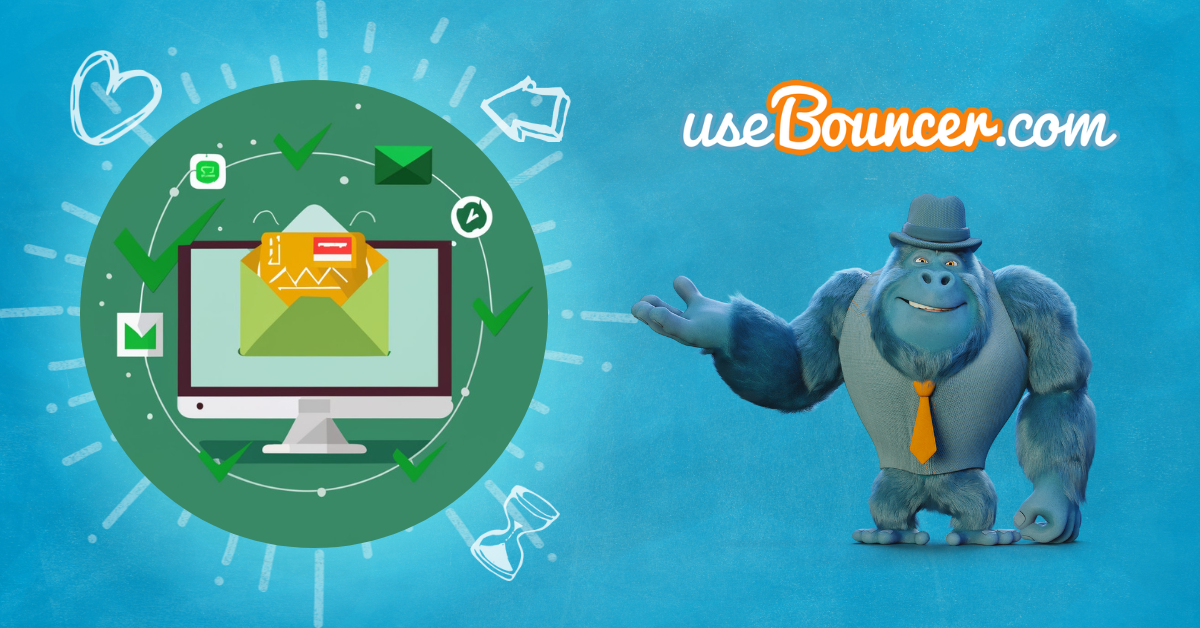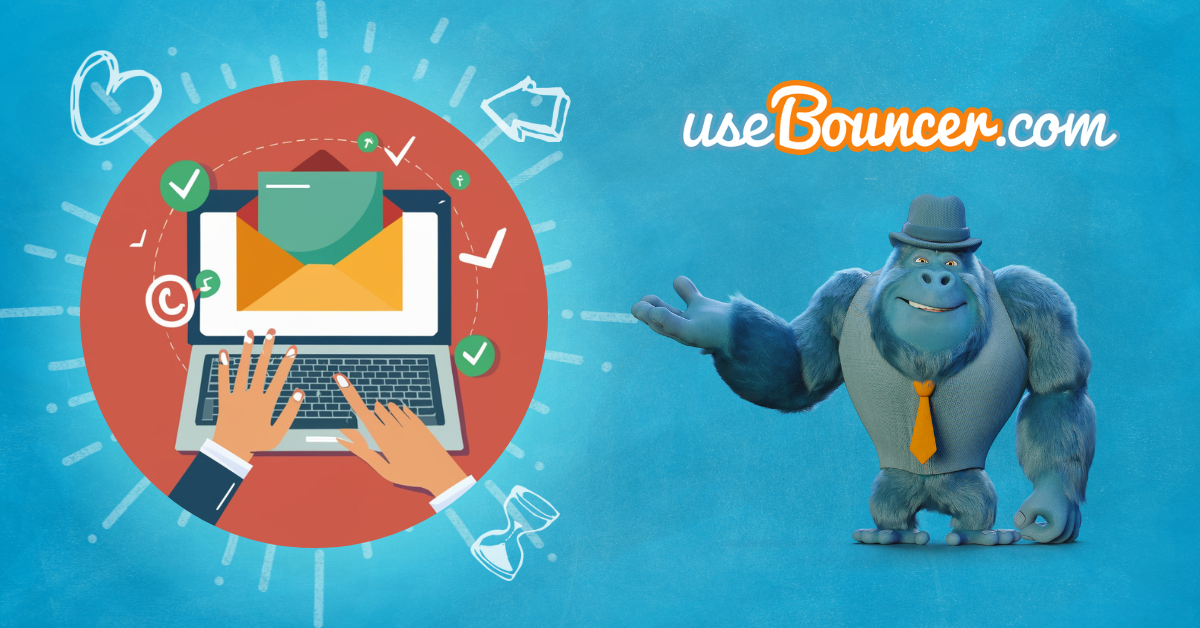Keeping your email lists clean and effective is a must for so many reasons. There are stacks of ways a poorly managed list can damage your email reputation, and reputation (as with every other angle of running a business) is everything.
Your email deliverability can mean the difference between a sales campaign or essential update reaching your recipient’s inbox or not. If you’re not reaching a potential customer’s inbox (or an existing customer’s), you’ve got zero chance to make the sale (or subsequent renewals).

The importance of a clean email list
- Increases your average open/read rate
- Improves your click-through rate
- Builds your IP and/or domain reputation
- Protects against blacklisting
- Reduces bounce rates
- Boosts deliverability and inbox placement rate
- Strengthens relationships with an already engaged audience
- Builds brand awareness, reputation and customer confidence
- Saves money by reducing the number of emails you send to inactive or poor quality addresses
- Boosts conversion rates
Possible methods of email verification:
There are 2 ways you can clean your lists.
The first, and most technically efficient, is using email verifier software.
The second is to carry out manual actions yourself—engaging in regular DIY list cleaning.
DIY list cleaning – how to verify for your lists for free
A blogger or marketer without the budget to cover the costs of verifying software will, at some point, need to learn how to clean their lists manually. DIY cleaning comes with one major advantage—it’s free.
A small list won’t offer too many challenges to those regularly scouring their data for problems. With low and manageable numbers, it shouldn’t be too time-consuming to carry out a little email list pruning from time to time.
However, those carrying more sizeable lists, those of e-commerce platforms with thousands of customers, or service sites with masses of subscribers, are going to struggle, manually picking through such a volume of data.
Cleaning out the bounces
Cleaning out hard and soft bounces is the DIY cleaner’s first job.
A hard bounce is an email address that is undeliverable. Check your email delivery data for bounce rates, and delete those hard bounce addresses straightaway.
You should also keep a close eye on your soft bounces. Soft bounces are those that have failed to deliver—but only temporarily. They might make it through in subsequent attempts, for example, if a server was down or a mailbox was full—but they might not.
You could try sending manual emails to your soft bounce addresses. Politely ask if they’re receiving your messages if they’re of interest to them and if they’d like to continue with your service. You can make informed judgements from your replies whether or not it’s time to remove them.
If your list is far too consuming for such action, you should delete any addresses that soft bounce more than a couple of times.
Deleting typical spam addresses
Many of the email addresses used by spammers are automatically generated. You’ve probably come across them already; they look nothing like how we’d consider a thought-through user name should appear.
[email protected]
[email protected]
[email protected]
Anything that resembles those types of nonsense addresses? Delete them.
Remove your unsubscribers
If someone doesn’t want to hear from you anymore, it’s incredibly unlikely you’re going to be able to reengage them in your products or services. Show the respect they deserve and strip them out of your list.
If you don’t, there’s a small chance they’ll complain, or a much bigger chance mark you as spam. Sending to an unsubscribed recipient, or being marked as spam, will harm your email or IP address; don’t fall into that trap.
Correcting misspelt email addresses
Humans make mistakes all the time. We’re fallible creatures, and if you put us in front of a keyboard, there are no guarantees we won’t keep making mistakes there too.
Some of the mistakes your subscribers will make will be obvious. Where they couldn’t possibly be anything but a mistake, correct them. If you don’t have too many to sift through, try a web-search of individual addresses to confirm your suspicions.
Gmial instead of Gmail
@hitmail instead of @hotmail
MrBowrn instead of MrBrown
.co.k instead of .co.uk
.cmo instead of .com
An obvious mistake is an easy fix. Get to spotting them right away—and then to the fixing.
Deleting the duplicates
Depending on how you’re gathering data, you could easily end up with multiple subscriptions to the same list. There is no benefit to sending multiple emails to the same recipient apart from to annoy them by cluttering up their inbox. You’ll also present an unprofessional portrayal of your marketing delivery and brand.
Get those duplicates deleted—now.
Email scrubbing
One way to improve list health is to take an active interest in which recipients are engaged in your messages and their consistency. This is known as email scrubbing.
There are services you can pay for, to automate and carry out the process, but if you want free email scrubbing, it’s back to carrying out the work yourself.
How do you do that?
Addresses engaging regularly — You’ll send emails that land where they should and are opened and read. Great. That’s exactly what they’re supposed to do. Leave them be; they’re doing just fine.
Addresses engaging occasionally — You’ll also send emails that land in their intended recipient inbox, but only get read occasionally. That’s okay, but can you do better, surely?
Carry out testing to find out if recipients engage more regularly when you send fewer emails, or at alternative times during the day. Maybe they’d prefer a different format?
It could be that your emails are landing in their spam folder. Why not add a call to action to make sure your email address makes it into their address book?
If you can bump your occasional addresses up into the regular engagement list, then the quality of your campaign results will improve, and your email or IP address reputation will strengthen because of it.
Addresses showing little or no engagement — There are 2 reasons for this. Your messages are going directly to their spam folder, or the recipient is simply not interested. You could spend time trying to nurture these recipients, but chances are you’d be wasting your time.
Delete!
Email verification – the added benefits of choosing an automated service
Having your lists checked and verified by an automated email cleaner or dedicated software is a quick, efficient and cost-effective way to keep bounces to a minimum and your address and IP reputation to a maximum.
What are the advantages of using an email verification service? Of course, they’re designed to do everything a manual deep-clean can. But what else?
The safest option for your sender reputation
Deleting invalid emails from your list before you will actually send any campaign to them is much safer for your sender reputation and email deliverability. If you rather remove emails once they actually bounce, it might lead to the situation where your emails land in the spam box!
Quick and cost-effective
They cover all the aspects and actions of DIY list cleansing and more. Because the tasks are automated, the operation takes far less time and is much more efficient. That leaves you more time to get on with the most important parts of your job.
A verification service may come with a price tag, but cost-effectively, how much are you paying to verify your lists manually when you consider yours or your staff’s hourly rate?
GDPR compliant
Most list verification software (Bouncer does for sure!) anonymize all addresses throughout the process. Only when your final results are delivered are they viewed in their native format, making the service GDPR friendly and in line with all current regulations.
Secure and reliable
Protecting your data is big business. An email list cleaning service takes care to protect everything in their system as part of the service, utilizing the best servers and continual testing.
Incredible accuracy
Bouncer achieves an accuracy of 99%. The peace of mind you’ll achieve when protecting your sender reputation and deliverability with such efficiency is invaluable. Why waste time being overly concerned with something that is so simply resolved at the click of a button?
Wrapping up
You’re on a website designed to promote the benefits of email verification services. We’re not hiding from that in the slightest.
We believe everyone engaging in email marketing, cold emailing or any other form of email sending should be using our service, or something just like it, as the bare minimum to maximize email deliverability, to protect your address and IP reputation and your sender score.
That said, we also believe that there is an important place for manual cleaning and checking.
It offers opportunities to understand the behaviour of your email recipients, to engage with them when responses or reactions don’t quite seem to fit, or if you’re looking into better ways of making connections and conversions.
Cleaning by hand isn’t sufficient to obtain the results you need, but it is still an essential part of the process when it comes to email engagement measurement and the fine-tuning that could make all the difference to your figures.

Izabela is a leading contributor to the Bouncer’s blog. She is inspired to help companies all around the world to get emails into their recipients’ inboxes








